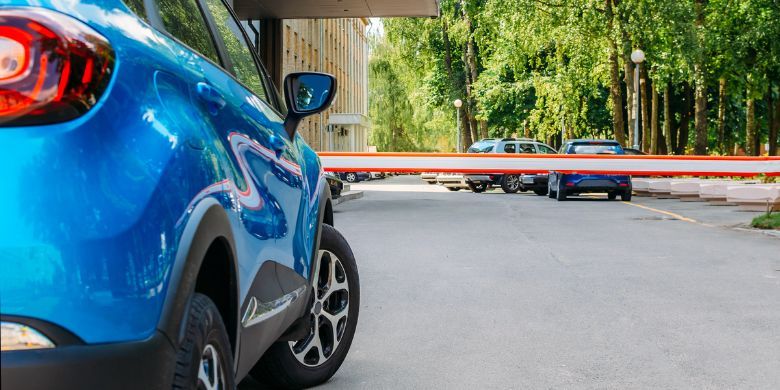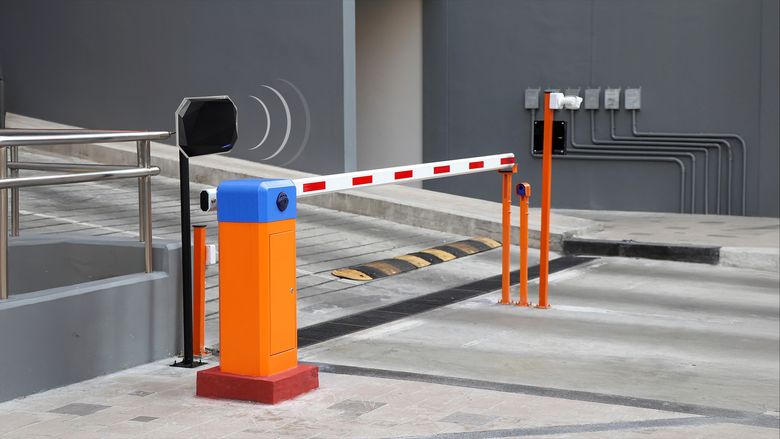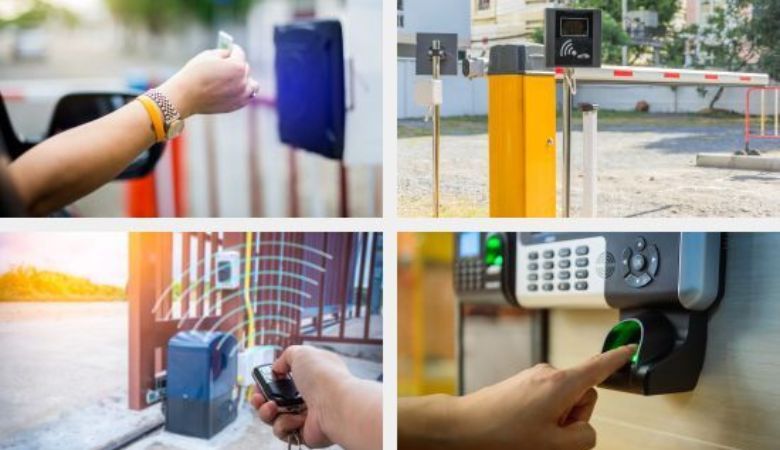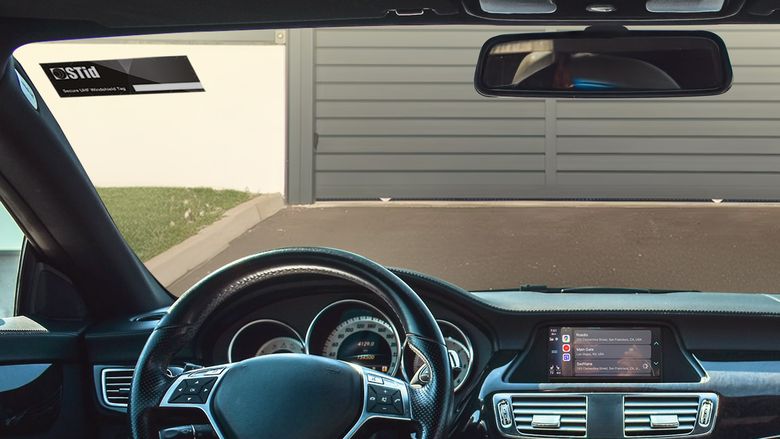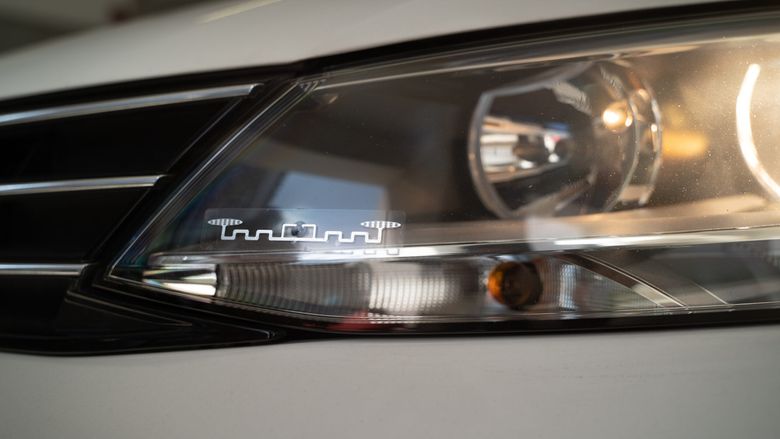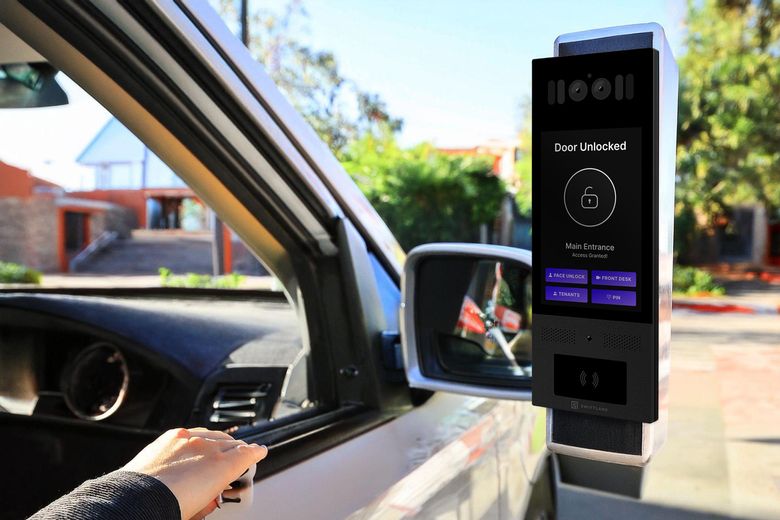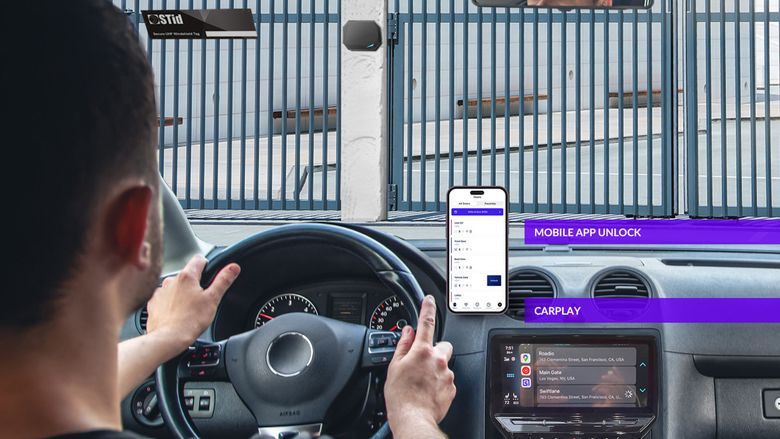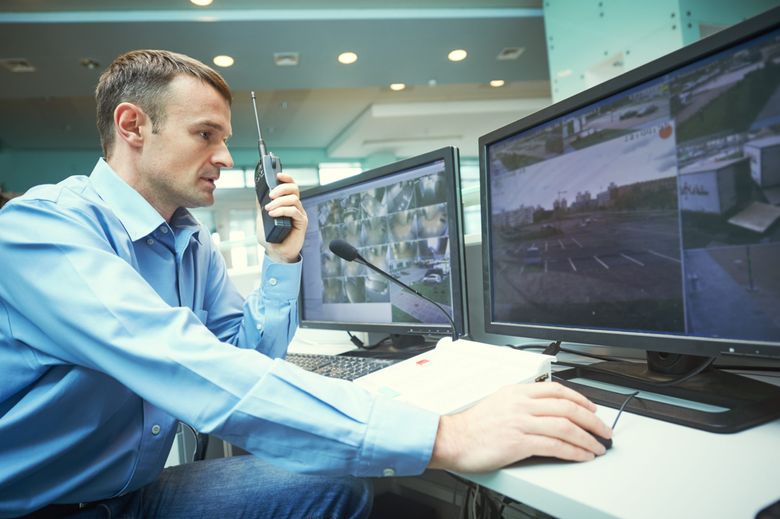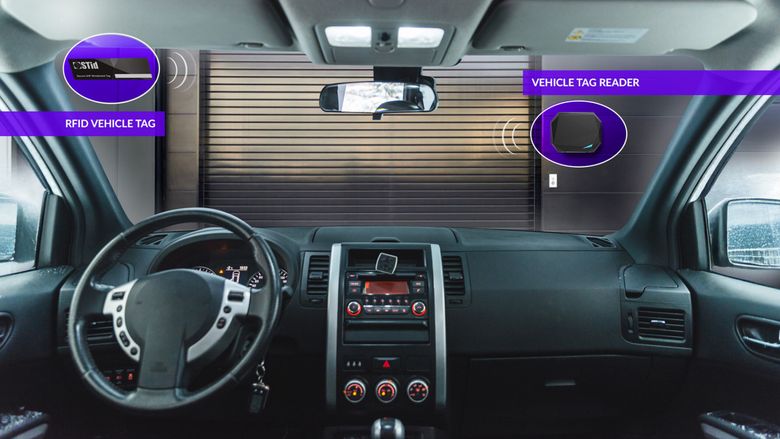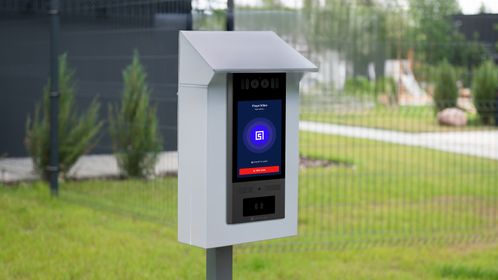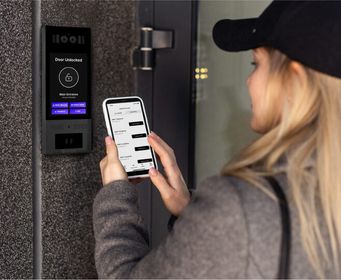HOA boards and condo associations, property managers, and building owners are increasingly exploring options to purchase a vehicle access control system. What are these systems, and what is driving the trend? From our vantage point as experts in electronic access control, we’ll look at the market for vehicle access control systems. We will explore the various types available, and highlight some of the major manufacturers. So – pardon the pun – buckle up and get on the road with us as we explore the world of vehicle access control.
Table of Contents
- What Do Vehicle Access Control Systems Do
- Why Vehicle Access Control Has Become So Important
- How Does a Vehicle Access Control System Work
- Types of Vehicle Access Control Systems
- Top Options in the Market Today (2025)
- Ask Swiftlane for Help
What Do Vehicle Access Control Systems Do
A vehicle access control system is designed to keep certain parking and roadways private. They help manage the entry and exit of vehicles into controlled areas such as gated communities, corporate campuses, parking garages, industrial zones, and logistics facilities. These systems are part of an overall security plan, streamlining (and reducing) traffic and improving operational efficiency.
Using technologies similar to electronic cashless tolling (ECT), they verify whether a vehicle (or its driver) has the appropriate credentials to access a space. Unlike cashless tolling, these systems often integrate with broader access control systems. They help in pedestrian entry, video surveillance, visitor management systems, and enterprise security platforms as part of comprehensive solutions for buildings and facilities.
There are generally four components needed in a vehicle access control system:
Credential
This is what tells the system “this is an authorized driver, visitor, or vehicle.” Credentials can include the vehicle license plate, a PIN number, a smartphone with an embedded app or code, or an RFID sticker or tag affixed to the vehicle.
Credential Reader
This credential reader is the hardware that recognizes credentials. It can include an intercom, a driver-level keypad along the roadway, an RFID reader, a barcode scanner, or a license plate reading camera.
Control Device
This device is part of the behind-the-scenes backend of the system. It checks the credentials against a database of authorized users. This database is sometimes stored on-premises or sometimes stored in the cloud. If an authorized vehicle or driver is present, the control device sends an “open” or “unlock” signal to the gate.
Mechanized Gate
This is the physical barrier that controls vehicle access. They can include retracting bollards, rolling gates and swing gates, barrier arms, mechanical spikes, and others. There are dozens of gate types that can be purchased independently of the other access control hardware, and most work inter-operably.
Why Vehicle Access Control Has Become So Important
You’ve maybe noticed it driving around in your community. There are more gated neighborhoods, more retail centers, hotels, and offices use controlled parking. Vehicle access control is growing. But why?
Community Safety Concerns: The perception that crime is rising is as high as it has been in 5 decades. This leaves many residential communities, including HOA neighborhoods, condo properties, corporate campuses, and even apartment complexes, seeking ways to secure the community and control access to the property. Vehicle access control becomes a key tool in managing that flow of traffic. Communities with families often rely on it to limit traffic entering neighborhoods and maintain low average speeds, which helps keep children safe.
Protect Parking as it Becomes Precious: A 2024 tabulation by the Parking Reform Network found that 18 cities, including large metros like Austin and Portland, had abolished parking mandates in 2023. This means more buildings are getting built with fewer parking spots. As part of a broad national trend of land use reforms, communities are reducing parking minimums everywhere from retail centers to new residential developments. With significant urban infill occurring everywhere from Seattle to Denver and across the Sun Belt, more cars are competing for fewer parking spots. Ensuring that building tenants and community members can find adequate parking has become a key driver behind these systems.
How Does a Vehicle Access Control System Work
At its base, vehicle access is about identification, authentication, and authorization. First, the system identifies the vehicle using a method such as an RFID tag, license plate recognition camera, Bluetooth signal from a smartphone, or manual PIN code entry. Once identified, the system authenticates the credential by comparing it against a database of approved entries. The system then decides whether to permit or deny access. If approved, the physical barrier (such as a gate, bollard, or garage door) opens to allow entry.
Today’s vehicle access hardware comes with software that offers various benefits to property managers. These interactions are logged in real-time, which helps with monitoring, auditing, and, in some cases, billing or time-based access management. Advanced vehicle access control systems can incorporate analytics, alerts, and multi-factor authentication. For example, a corporate site might require both license plate recognition and a time-sensitive mobile credential. A residential gate might open automatically when a vehicle with a valid RFID tag approaches. Meanwhile, a parking lot may use these systems to track the duration of parking and automatically bill users accordingly.
Types of Vehicle Access Control Systems
There are several types of vehicle access control systems. Each is suited to different use cases and security levels.
RFID-Based Access Systems
RFID (Radio Frequency Identification) is among the most common technologies used today for vehicle entry. In these systems, vehicles are equipped with RFID tags. These are usually windshield stickers or dashboard-mounted tags similar to an electronic toll tag. The tags communicate with fixed RFID readers mounted at entry points like gates and garage doors. When a vehicle approaches, the tag is scanned. If it’s on an approved list, access is granted automatically without the driver taking any action. These systems are widely used in residential communities, business parks, and commercial garages, offering speed and minimal friction for authorized users. They benefit from being hands-free and working at a distance.
Barcode Readers
A legacy technology widely used before RFID included bar code readers. They work in the same general way as RFID-based systems, except that a wide-angle scanner similar to those used by a cashier reads a bar code sticker affixed to the car. These systems require a line of sight between the scanner and the bar code, and are more prone to errors depending on sticker placement, weather/fog etc. Communities upgrading access control usually replace these with RFID-based systems today.
License Plate Recognition (LPR) Systems
LPR systems use high-resolution cameras equipped with optical character recognition (OCR) to scan and identify vehicle license plates. These plates are checked against a dynamic whitelist stored locally or in the cloud. If the license plate is on the authorized list, the system opens the gate. LPR offers a contactless, highly automated experience. It is particularly useful in commercial parking lots, hotels, logistics hubs, and mixed-use properties. Advanced LPR systems can function effectively even in low-light or high-speed situations. Many now include AI-enhanced plate recognition for improved accuracy. They do require a clear line of sight between the camera and the license plate and don’t work properly if the plate is dirty or in heavy fog.
Keypad or PIN Code Entry
Though less common in high-security environments today, keypad entry systems are still used in smaller facilities or as a backup method. They are often found at the gates of industrial facilities and self-storage units. Drivers enter a pre-assigned code to open a gate or door. While cost-effective and easy to install, these systems pose security risks if codes are shared or not rotated frequently. They are also not hands free and require some finesse. The driver has to properly line up the driver’s window with the keypad. Or worse, sometimes drivers need to step out of the vehicle to walk to the PIN pad. On the plus side, they work without providing any special hardware to drivers. You can text or email someone a PIN code, and they can get in. Sometimes keypads are offered for visitors in addition to the hands-free methods described above.
Mobile App and Bluetooth (BLE) Systems
Mobile-based systems use smartphones as credentials, often leveraging Bluetooth Low Energy (BLE), NFC, or Wi-Fi. Users can open gates via a dedicated smartphone app or even with voice commands integrated through virtual assistants (i.e. “Siri, open the gate”). The smartphone can therefore provide another hands free way for driver’s to open the gate, without being assigned special hardware to affix to their car. These systems are gaining popularity due to their convenience and because most drivers carry their phone with them. They are good for commercial office buildings and residential properties seeking app-based convenience and centralized control.
Hybrid Systems and Multi-factor Authentication
Hybrid systems combine two or more access methods to increase security or provide flexibility to drivers. For example, a logistics center may use RFID for employee vehicles and LPR for delivery trucks. Sometimes, a mobile app is used alongside LPR, allowing users to confirm access if the system doesn’t recognize a plate (such as when someone might be driving a new vehicle temporarily). These combinations are particularly useful in environments with varied user groups and security levels. For high security environments, both the driver and the vehicle can be required to have the right credential – for instance a smartphone app for the driver and a license plate for the car.
Remote-Operated or Guard-Assisted Systems
In locations where occasional access needs to be granted to unknown vehicles, such as a delivery entrance, visitor entrance, or VIP gate, access may be controlled manually by security personnel. These setups are often supported by video intercom systems that allow guards to see and communicate with drivers before opening a gate remotely. Many gated communities feature two-lane entrances. One lane is reserved for visitors who are greeted by a guard, while community residents and tenants use the second lane, which is equipped with an automated gate.
Top Options in the Market Today (2025)
The vehicle access control market has evolved significantly in recent years, with many systems moving toward cloud-based, mobile-integrated, and AI-enhanced platforms. Here are some of the most prominent options currently available for controlling vehicle access:
Nedap ANPR Lumo
Nedap’s ANPR Lumo provides LPR-based solutions known for high-speed, high-accuracy license plate recognition. It includes onboard processing (an on-premises-based system) and works without needing external software. This makes it ideal for installations with limited infrastructure, such as a lack of an internet connection. It’s commonly used in airports, universities, and high-end gated communities.
Avigilon Alta (formerly Openpath)
Avigilon’s Alta platform offers cloud-based access control with strong mobile integration. It supports vehicle gate access via BLE-enabled smartphones, automatic unlocking when users approach, and real-time permissions management. Its open API and integration options make it a favorite in commercial office settings.
HID Global RFID Tags and Readers
HID remains a leader in RFID access technology, offering secure, encrypted vehicle tags and readers suitable for enterprise-grade installations. These systems integrate well with broader building security setups and are frequently deployed in hospitals, universities, and secure government facilities.
Genetec AutoVu
Genetec’s AutoVu is an enterprise-grade LPR system that offers not only access control but also parking enforcement and vehicle analytics. It integrates natively with Genetec’s Security Center platform, providing a unified approach to video surveillance, access control, and vehicle tracking. This solution is widely adopted in municipalities and transport hubs.
Came Parkare
Came Parkare focuses more on parking access management, offering hybrid systems that combine ticketing, LPR, RFID, and digital payments. These are ideal for airports, shopping centers, and urban parking infrastructure projects.
Swiftlane
Our company offers a comprehensive suite of vehicle access control products that seamlessly integrate with building access control systems. For residents, employees, or parking subscribers, we offer automated solutions like RFID windshield stickers and RFID proximity readers that automatically open roadway gates for authorized vehicles. Vehicle gates can also integrate with our user app to open using tools like Siri or Car Play. For vehicles such as rentals or guest cars, drivers can use traditional PIN code keypads to open gates or call a resident or tenant using our video intercom. Building managers can add and remove users easily using our cloud-based management program, which automatically updates across all doors and gates across a facility.
Trends and Innovations Driving the Market
As you think about investing in a vehicle entry solution, consider the following trends that are shaping the future of this market:
- Frictionless Access: Demand is growing for systems that allow vehicles to enter without stopping, including LPR, RFID, and BLE-based systems.
- Cloud and Remote Management: Modern platforms allow administrators to manage access lists, monitor activity, and troubleshoot devices remotely from the cloud, without sending a technician to program each entry point on site.
- AI-Powered Analytics: Some systems now analyze traffic patterns, alert on anomalies, or help identify bottlenecks, which can provide valuable insights in a large or dynamic environments.
- Environmental Considerations: Newer systems are designed to work in all weather conditions, including extreme temperatures, fog, and rain. Look for hardware with an IK65 or higher rating.
- Integration with EV Infrastructure: As electric vehicles become more common, access control is being tied to EV-only parking zones or charger access.
- Scalability and Customization: Systems are increasingly modular, allowing property managers to scale from a single entrance to dozens of access points across a campus.
Ask Swiftlane for Help
We have years of experience putting together vehicle access and parking control solutions for buildings, facilities, gated communities and campuses. We’re here to help.
You can see a complete overview of our vehicle access control system, including intercoms, RFID tags, and traditional clickers. Our system can fully integrate with access control tools for doors, including mobile access control, facial recognition, keypads, and RFID fobs. What’s more, it can all be managed from our unified cloud-based platform.
If you are ready to learn more, set up a consultation with our team.

